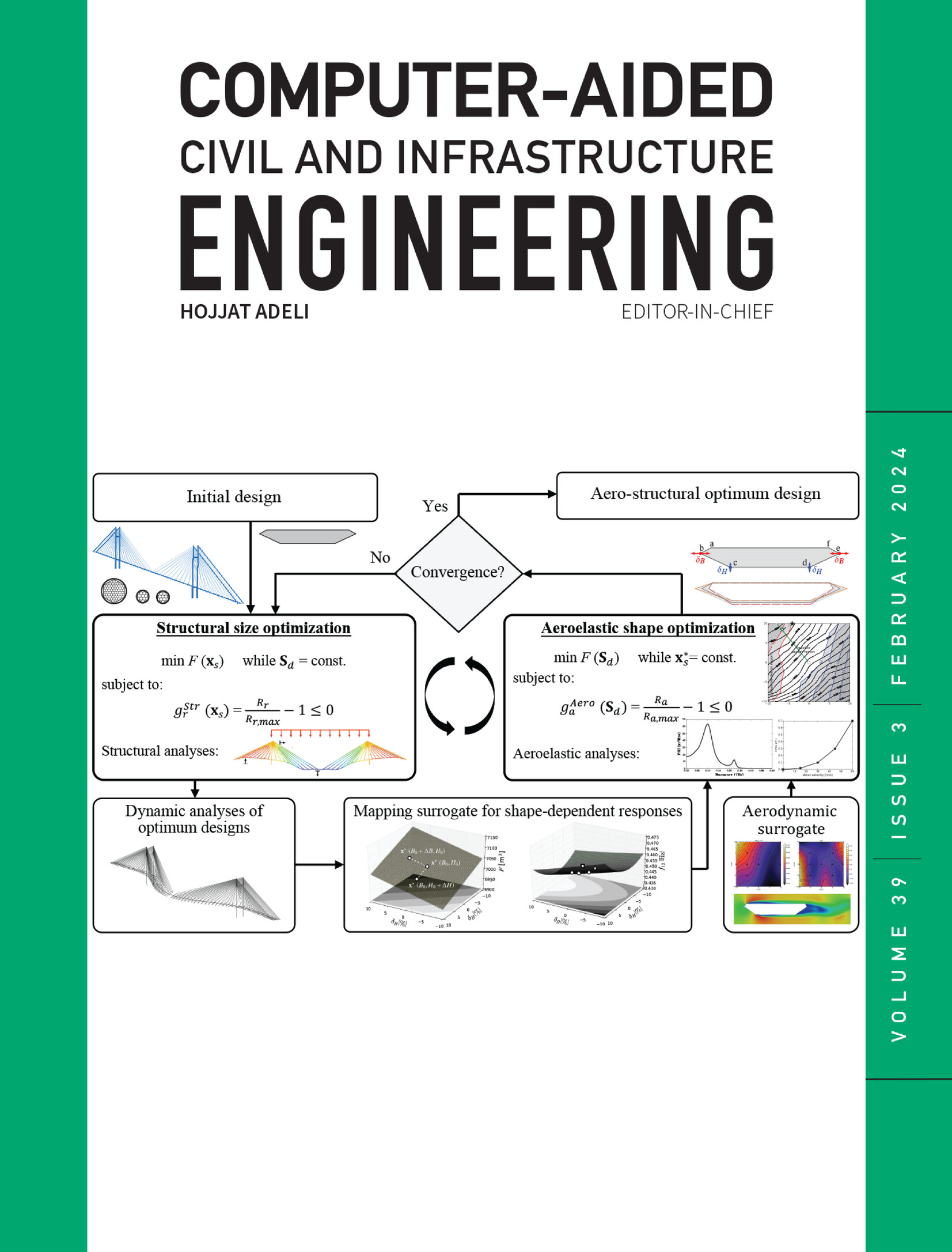具有成本效益的挖掘机姿态重建与物理限制
IF 8.5
1区 工程技术
Q1 COMPUTER SCIENCE, INTERDISCIPLINARY APPLICATIONS
引用次数: 0
摘要
挖掘机的安全和效率对施工进度至关重要。监测他们的3D姿势是至关重要的,但往往受到传统方法的资源和准确性问题的阻碍。本文提出了一种在考虑物理约束的情况下,使用具有成本效益的单目摄像机重建挖掘机三维姿态的方法。该方法包括两个步骤:深度学习识别2D关键点,然后利用挖掘机运动学模型、坐标变换和摄像机投影关系进行优化重建3D姿态。实验结果表明,该方法的平均关节位置误差为428.58 mm,平均气缸长度误差为5.12%,优于其他方法。该方法可用于建筑工地挖掘机的安全监测和生产率管理,具有成本效益。本文章由计算机程序翻译,如有差异,请以英文原文为准。
Cost‐effective excavator pose reconstruction with physical constraints
Excavator safety and efficiency are crucial for construction progress. Monitoring their 3D poses is vital but often hampered by resource and accuracy issues with traditional methods. This paper presents a method to reconstruct the 3D poses of excavators using a cost‐effective monocular camera while considering physical constraints. The approach involves two steps: deep learning to identify 2D key points, followed by using excavator kinematic models, coordinate transformation, and camera projection relationships to reconstruct 3D poses with optimization. Experimental results show the method achieves a mean joint position error of 428.58 mm and a mean cylinder length error of 5.12%, outperforming alternative methods. This method can be employed cost‐effectively for safety monitoring and productivity management of excavators on construction sites.
求助全文
通过发布文献求助,成功后即可免费获取论文全文。
去求助
来源期刊
CiteScore
17.60
自引率
19.80%
发文量
146
审稿时长
1 months
期刊介绍:
Computer-Aided Civil and Infrastructure Engineering stands as a scholarly, peer-reviewed archival journal, serving as a vital link between advancements in computer technology and civil and infrastructure engineering. The journal serves as a distinctive platform for the publication of original articles, spotlighting novel computational techniques and inventive applications of computers. Specifically, it concentrates on recent progress in computer and information technologies, fostering the development and application of emerging computing paradigms.
Encompassing a broad scope, the journal addresses bridge, construction, environmental, highway, geotechnical, structural, transportation, and water resources engineering. It extends its reach to the management of infrastructure systems, covering domains such as highways, bridges, pavements, airports, and utilities. The journal delves into areas like artificial intelligence, cognitive modeling, concurrent engineering, database management, distributed computing, evolutionary computing, fuzzy logic, genetic algorithms, geometric modeling, internet-based technologies, knowledge discovery and engineering, machine learning, mobile computing, multimedia technologies, networking, neural network computing, optimization and search, parallel processing, robotics, smart structures, software engineering, virtual reality, and visualization techniques.

 求助内容:
求助内容: 应助结果提醒方式:
应助结果提醒方式:


